We have been thinking about this interview for a long time. Radek Szlaga is one of the most interesting and independent artists of the young generation who surprises viewers with his art and energy. He creates while constantly traveling between Poland and the United States. A painter, sculptor and a creator of artistic objects. Only a few months before this interview, Szlaga’s exhibition Limited Dictionary was held at Detroit’s Trinosophes gallery and a month later, in December, he and Konrad Smoleński showcased their project/performance Tribute to Errors at Performa 13 biennial — Polish Pavilion Without Walls in New York. A few weeks ago, Szlaga opened his latest exhibition at Czytelnia Sztuki in Gliwice (Poland) where he comes from. In the meantime, we would like to invite you to read our interview with Radek.

Radek Szlaga, M (Limited Dictionary), 2013, 42,5 x 62,5 cm, mixed media on paper, photo courtesy the artist
Contemporary Lynx: A picture of you is for me a picture of an artist on a constant journey, an artist hovering between various places but also between various ways of artistic expression. You were born in Silesia but your family originally comes from the mountains. You studied in Poznan but you live in Warsaw now. Your family immigrated to the United States. Your works are in a constant motion, change. They are paintings but also objects. Your characters are “walking out” of the canvasses. They are installations, performative actions. How is this connected to your search for your own place in the world, your roots?
Radek Szlaga: Yes. “Constantly in motion” like in the song by Kosmetyki Mrs Pinki. The 80s are about Gliwice, lack of everything, memories of lines to buy some coffee or toilet paper, permanent crisis, my father in the United States — staying two years on a tourist visa, adventure. Then everything is falling apart event more. Free elections, Teletombola lottery, Stan Tyminski etc.., My father comes back, we buy a house in the countryside, move out from Silesia in a gray Polonez car. Then Opole, Zielona Góra, and Poznan for a little longer. After studies: generational experience, ethos of emigration, London, Berlin, and every now and then Detroit in the United States where my family emigrated in the meantime.
That is true, I think I do run all the time. Even my dreams often look like platform games with a moving target. What is more, I see reality from many different perspectives and consequently I find it difficult to identify with one greater idea or environment. I believe in nothing. I am a loner (I think about myself this way) though quite likeable one and, as for a loner, having quite many friends. However, I believe there is a part of me that cannot be understood by others and I cannot talk about with anyone. My art is about this fraction of “my extremely complex personality.” (What is missing here is a punctuation mark suggesting an ironic tone, and this is not an emoticon ;)) This art is about a place or rather its lack and about the necessity of finding this place and putting it on a map together with all other important information extracted from the depths. It is a history and geography of lack and excess. Creole myths of identity written in mixed dialects. The map and beautifully even segments where I note what just seems to me and what I know for sure. The next day I feel embarrassed by my own naivety. I am still painting the same picture. It is unfinished, unclosed, in an endless update. And even when I go beyond the traditional medium, it is still thinking through painting. I remain faithful to painting — we are still together but we live in an open relationship. I think of the world as a picture in paint and this way of thinking defines everything I do.
CL: What does Detroit mean to you? Is it your home, a place you sentimentally return to, Little Poland? Or is it more universally a symbol of change, of demythologization of America as a country of success?
RS: It is a bit of everything you mentioned. It is a fallen city, post-apocalyptic behemoth. A monster embracing our small Polish ghetto from all sides. It is my mom, dad, brother, Midwest, “insiura”, a store with Polish “kielbasa” (‘ponglish’ for insurance and sasage – CL) arguments with family, all these beautiful traditions brought to America from the Old Country and pretended so well that they become more real than the originals. It is the imperfection of the new language, racism and reverse racism (Detroit is a black city), private stories of alienation, post-colonialism, etc. that become part of a larger narrative. They turn out to be surprisingly versatile.
This city is a left side of my body and of majority of my works. It is an inseparable part of my cosmos. Visually, it resembles Warsaw: not extensively beautiful and to a large extent ruined, although they are at two totally different points in history.
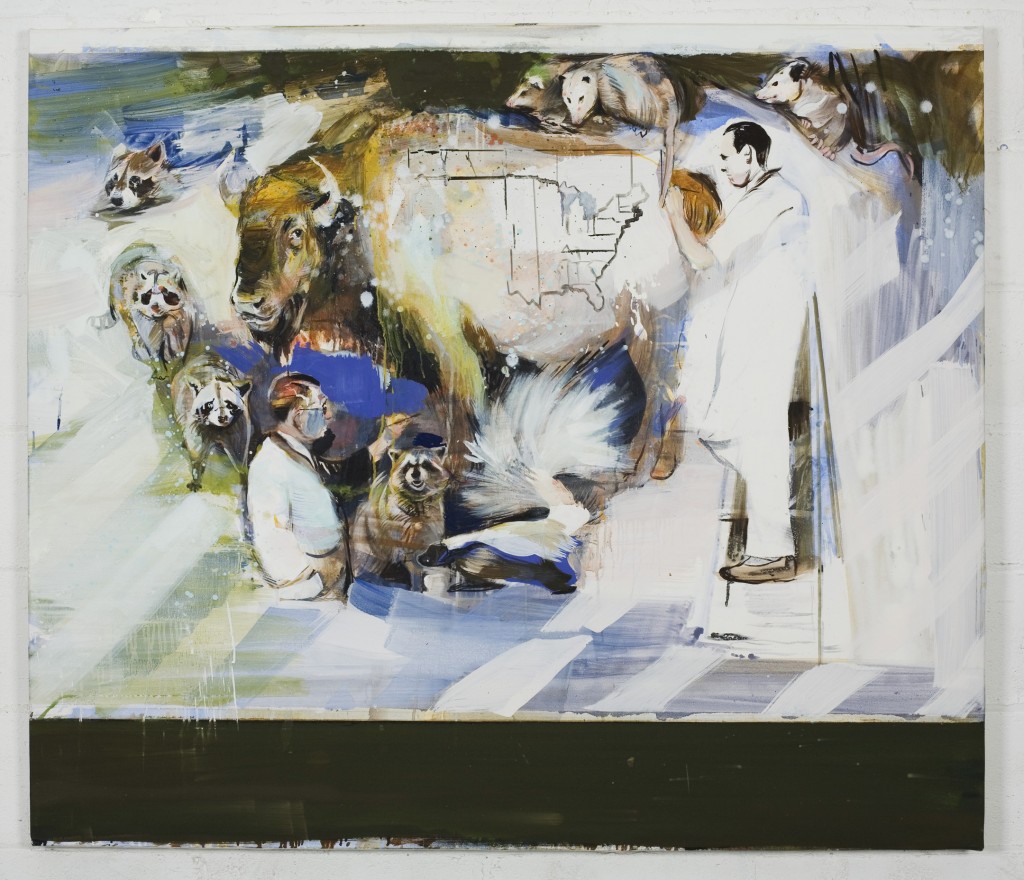
Radek Szlaga, Rodents/Gryzonie, 120×140 cm, oil on canvas, 2013, photo courtesy the artist and Leto Gallery
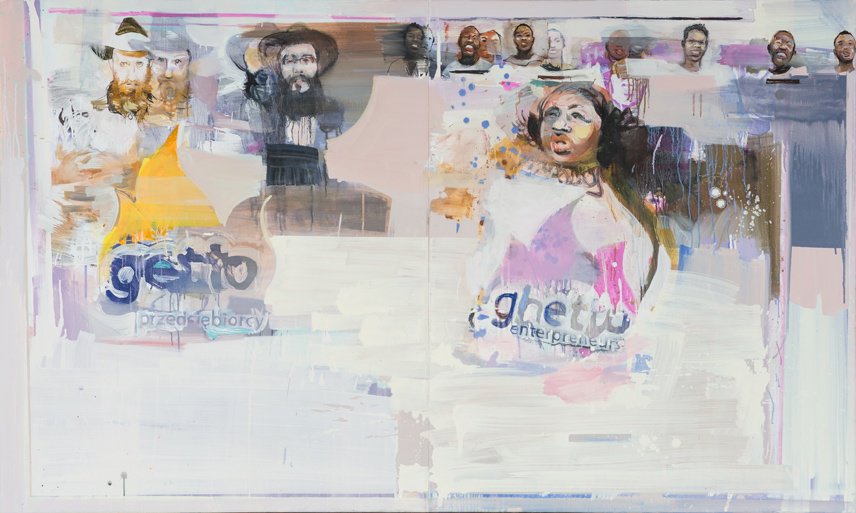
Radek Szlaga, Ghetto enterpreneurs / Getto przedsiębiorcy, 120 x 200 cm, oil on canvas, 2014, photo courtesy the artist and Leto Gallery
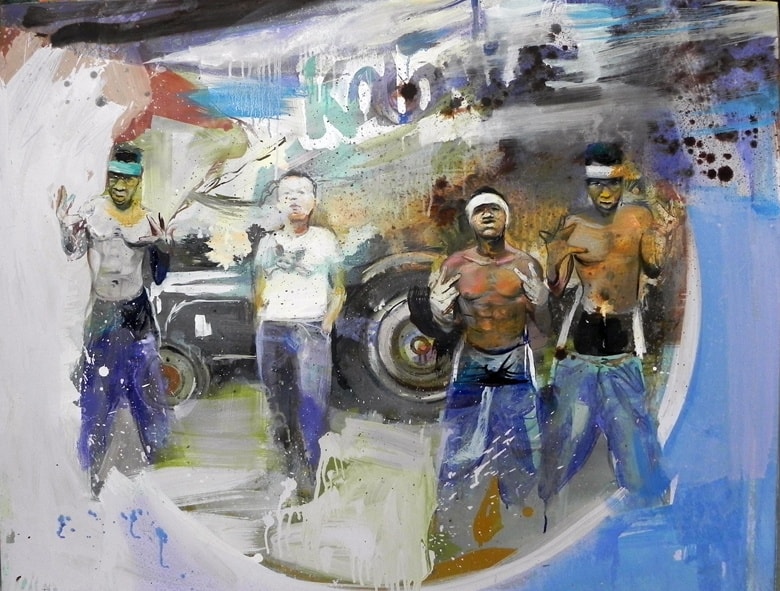
Radek Szlaga, Colonies / Kolonie, 100 x 120 cm, oil on canvas, 2013, photo courtesy the artist
CL: Recently, your work has been referring more and more to private subjects, to the notion of being torn between Poland and America where your family lives. What is so appealing in a vision of combining these two seemingly distinct worlds?
RS: Postmodernism accustomed us to combining everything with everything. It is confusion cuisine (a reference to the fusion cuisine but also to the word “confusing” – CL). Finally, however, everything tastes very similar. In the long run, the total freedom seems to me quite tiresome and unbearable. I am very suspicious of big words, narratives imposed by some people on others or of finished scenarios. I appreciate small and simple things. That is why I paint food, fauna, flora, portraits, landscapes and colors. I allow myself to have a ludic sense of humor — something basic you cannot argue with, a type of unsophisticated wisdom or rural philosophy which serves as an antidote to the complexity of the world. A single run or a simple mistake may turn into a center around which I create new paintings, echoes, repetitions. It is me who formulates the rules and it is the area where I feel completely free and have much to say. It is why I create my own worlds, even if the process resembles extraction rather than fusion. I’m trying to organize these various threads into systems, dictionaries, lexicons. It is a kind of obsession, but it is does not harm anyone… but me.
CL: Exactly, at first glance your works seem very light and full of humor, as if you looked at things through rose-tinted glasses or took them with a pinch of salt. However, when we go deeper, the humor gives way to a kind of bitterness and harsh criticism.
RS: I paint every day. Painting is my language, though by the lack of written rules I should rather say—my dialect. Most of what I think about is then being reflected in my works. I read too much but what I read is certainly not what I should read. A have a serious problem with that. Generally, I represent the worldview of the last wiser person I talked to. I cannot help it. I know nothing, and life punishes and scourges for that. From this impotence of learning stems bitterness, but also great, so to say, sophisticated humor. I really like what Oskar Dawicki or Cezary Bodzianowski do. The irony is able to pierce this affectation balloon I associate with the art created in Poland, this Great Sadness which is the experience of this nation and the history of this place. But I do not calculate that, it depends on which side of the bed I wake up on.
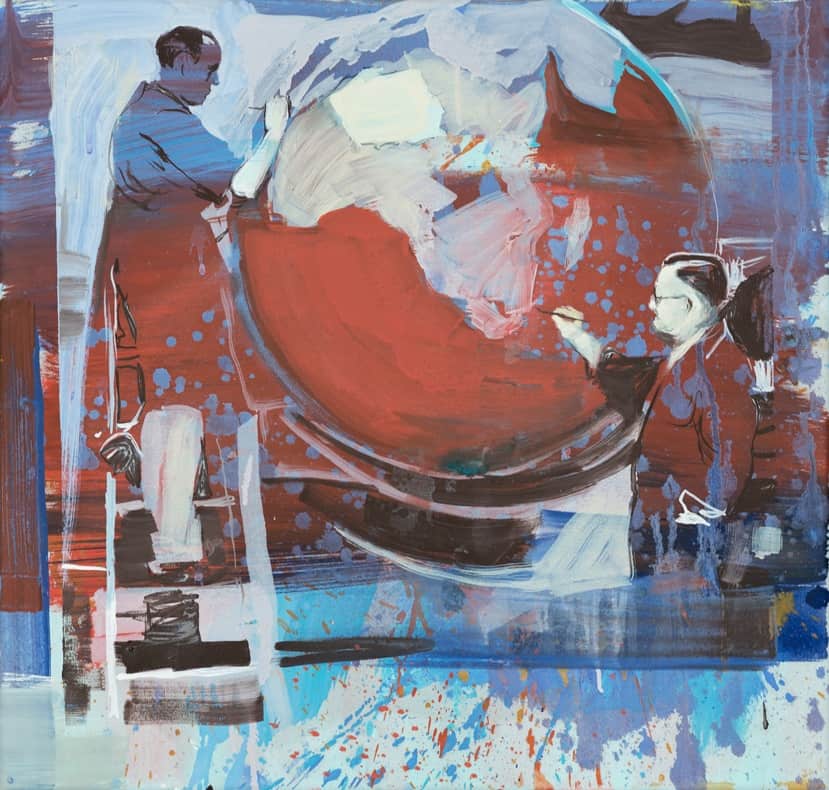
Radek Szlaga, Heart of darkness / Jądro ciemności, 2014, 50 x 53 cm, oil on canvas, photo courtesy the artist and Leto Gallery

Radek Szlaga, Szlagówka, 160 x160 cm, oil on canvas, 2013, photo courtesy the artist
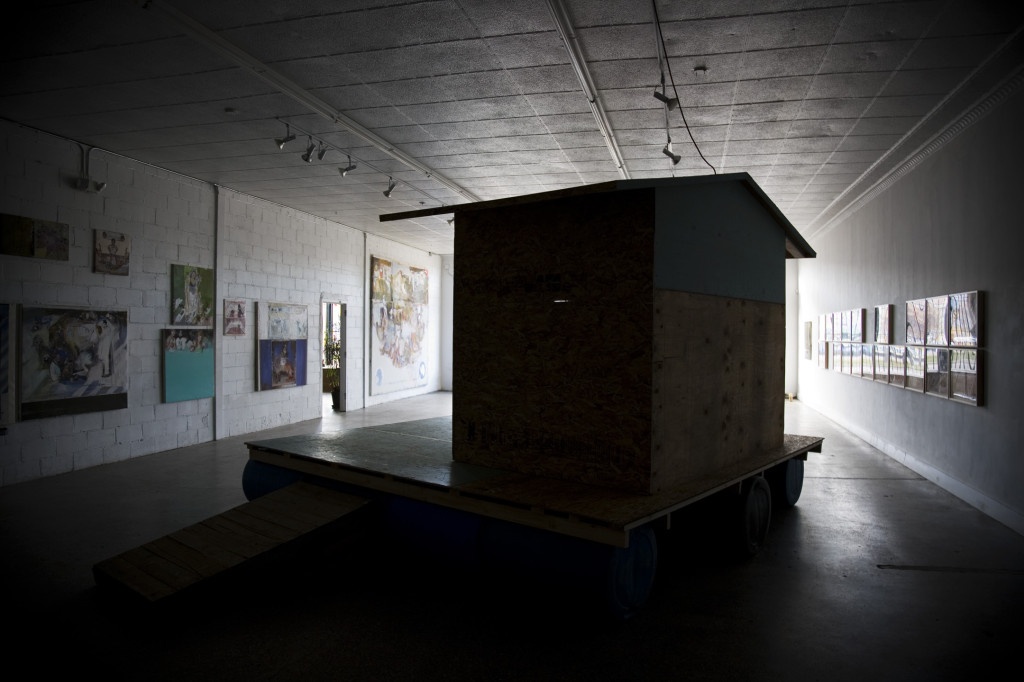
Radek Szlaga, Limited Dictionary, exhibition view, Trinosophes, Detroit 2013, courtesy the artist and Trinosophes, photo Garrett Maclean
CL: In your work, you combine two worlds: the old one — Poland and the new one — Detroit. You create a hybrid, merged image of the two, where old women with scarfs on their heads and Polish villagers exist next to Afro-Americans, Neanderthals, mammoths and hens. You create some kind of a cocktail/shake, where all ingredients intertwine. What kind of world do you want to show us?
RS: I guess, the term ‘Afro-Americans’ is no longer correct. Mammoths reflect old times, fascination with simulacra, and all that nonsense. It is my way of dealing with postmodernism. It is going beyond its unrestricted and unlimited freedom. I try to give meaning and content to all the things I do, e.g. through everyday realization of my failure. “The underworld of a small narrative.” Cut n’ Paste, or rather “Chop n’ Screw, where irony does not preclude involvement, but it probably stems from the type of sensibility shaped by black culture (of which I am a devoted fan) and confronted with the brownness of paneling, with elastane socks and the mindset with still reverberating Soviets.
CL: Your two exhibitions opened in New York and Detroit a few months ago. Could you tell us how this collaboration started? Did your last year’s participation at the Frieze art fair in NY contributed to this? If so, how?
RS: To be honest, I do not think so. Frieze was a great adventure. We sailed with Honza (Honza Zamojski, artist and designer born in 1981 – CL) and the Filipino crew for many days and when on this rickety container ship, we did create all the artifacts, which we later traded at the fair. It swayed terribly. But frankly I do not know what impact it had on our subsequent participation in New York’s PERFORMA. I do not want to analyze it. Despite the fact that we were together in Penerstwo, my present collaboration with Konrad Smoleński has been our first such close cooperation. He is a titan. I have great respect for him.
My Detroit exhibition started somewhat differently. It was proposed to me by Rebecca Mazzei — responsible for MOCAD’s “special projects”— after her visit to Warsaw. At the time she was in Warsaw I was showcasing my “Freedom Club” at the Centre for Contemporary Art Ujazdowski Castle. It was probably this exhibition that had impressed her (irony, again) ..
CL: What does painting mean to you? How do you perceive it?
RS: I appreciate its primal simplicity, its limitations. They determine the topics and the way of working. I grew up more with newer media, my sensitivity developed thanks to music rather than albums by surrealists or Arcimboldo. I am aware of the limits of painting but I like it, I respect it.
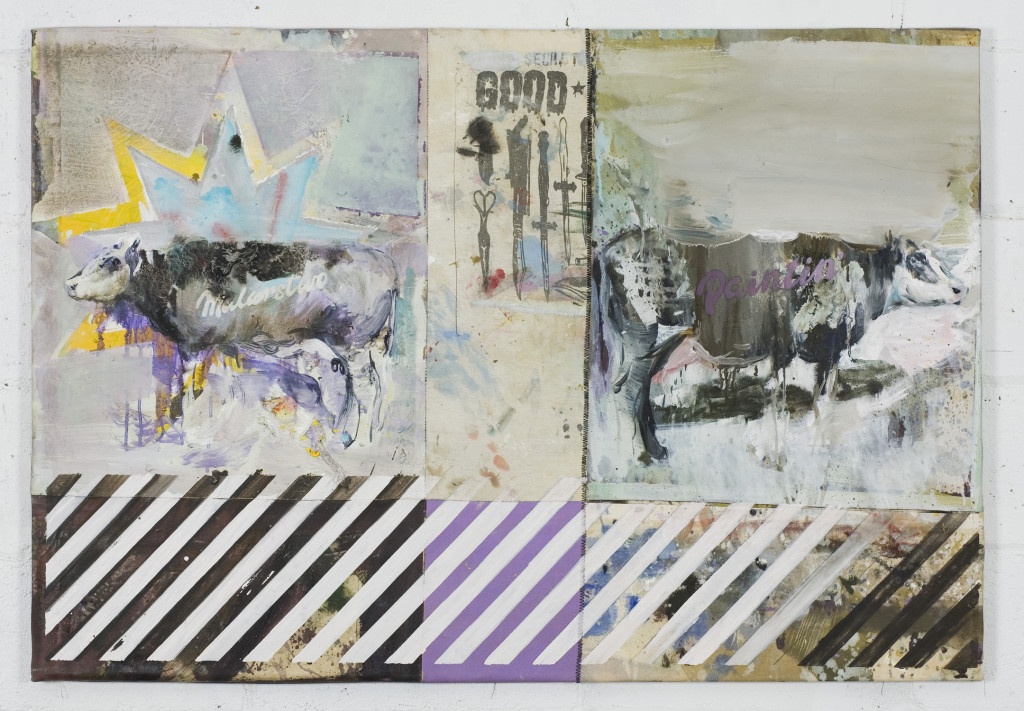
Radek Szlaga, Paintin’ / Malarstwo, 95 x 120 cm, oil on canvas, 2013, photo courtesy the artist and Leto Gallery
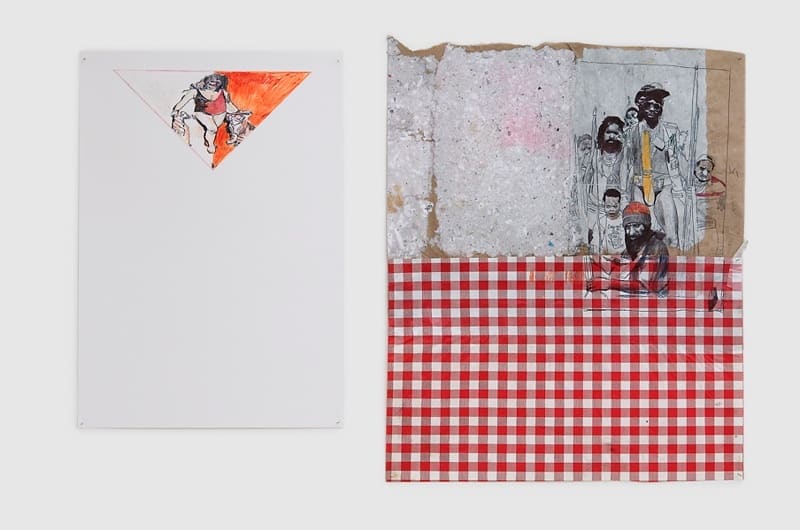
Radek Szlaga, West werk
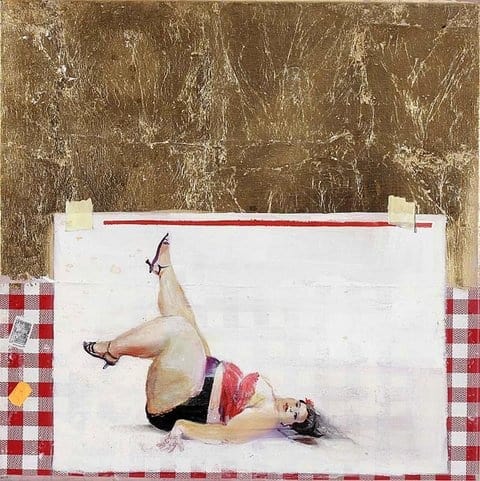
Radek Szlaga, Eat Me, 2009
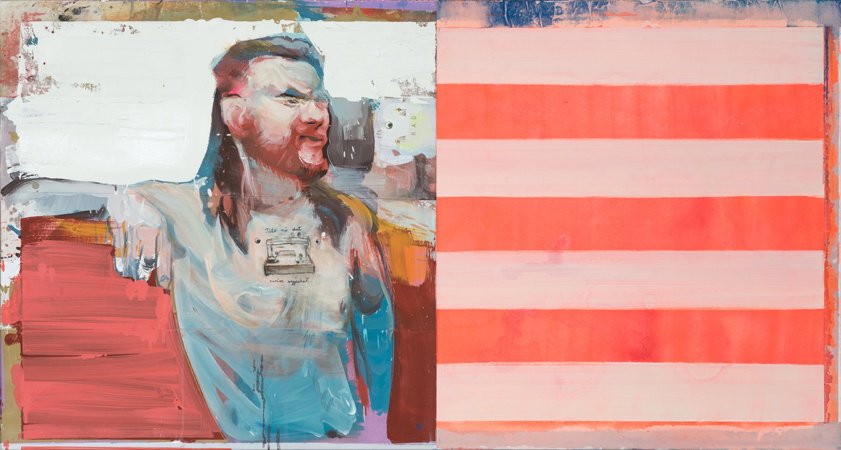
Radek Szlaga, My dad gave me a sewing machine before he left / Tato mi dał maszynę do szycia zanim wyjechał, oil on canvas, 80 x 150 cm, photo courtesy the artist
CL: What does the process of your work look like? How do you to collect materials for your projects?
RS: I am loyal to painting, but the way I work is constantly changing; I do not allow myself any routine.
Recently I washed a few works, which unfortunately turned out to be a complete disaster. I sew a lot. I use old, never finished paintings, choose their worst parts and sew them with a sewing machine I got from my father. I call this method “chop n’ sew,” in reference to the type of music of the black ghettos in southern States: very original, so as not to use the word primitive; something impossible to talk about.
CL: I remember that when I first looked at your works I thought about an American painter Richard Prince who utilizes quite similar mode of expression and composition. Are there any artists that have a particularly strong impact on you, or whose works move you more than others’?
RS: Yes, but they twinkle in the firmament of my fascination and then disappear. Richard Prince – true, I like him. In the past it was Nikifor, Basquiat, Wróblewski, Sasnal, Peter Doig (or rather his lifestyle) and today it is Christopher Wool, Mike Kelley, Chris Burden, trash, dirt and darkness, with a hint of sensitivity in the moments of weakness so it does not look this bad. I appreciate people devoted to what they do, regardless of the medium or aesthetics. I do not believe the kids who use the language of the older artists from previous generations. I think that honesty and authenticity without calculating or following the trends and “good advice” are the greatest values in today’s art.
CL: For some time, you have been cooperating with BNNT over some of your projects. How does their sound complete your work?
RS: Sometimes I think they are musical equivalent of my painting – some aspects of it. If I had a talent for music (although I lack the charisma and courage to appear in public) I would be probably doing something similar to what they do, though something even more idiomatic; it would be difficult to talk about.
CL: Whenever we talk, you are always working on something new, planning new projects. Do you have any new finished projects?
RS: I have a few. In a few days we are opening an exhibition in Gliwice. I have not been there for 25 years. I’ll be showing you things that during this time I have created in different places I was associated with. We will take a look at it all and try to arrange it in a meaningful whole; a map of the world.
CL: Thank you for this conversation and we will keep our fingers crossed for your projects.
Translated by Urszula Płoch-Syhłowyj
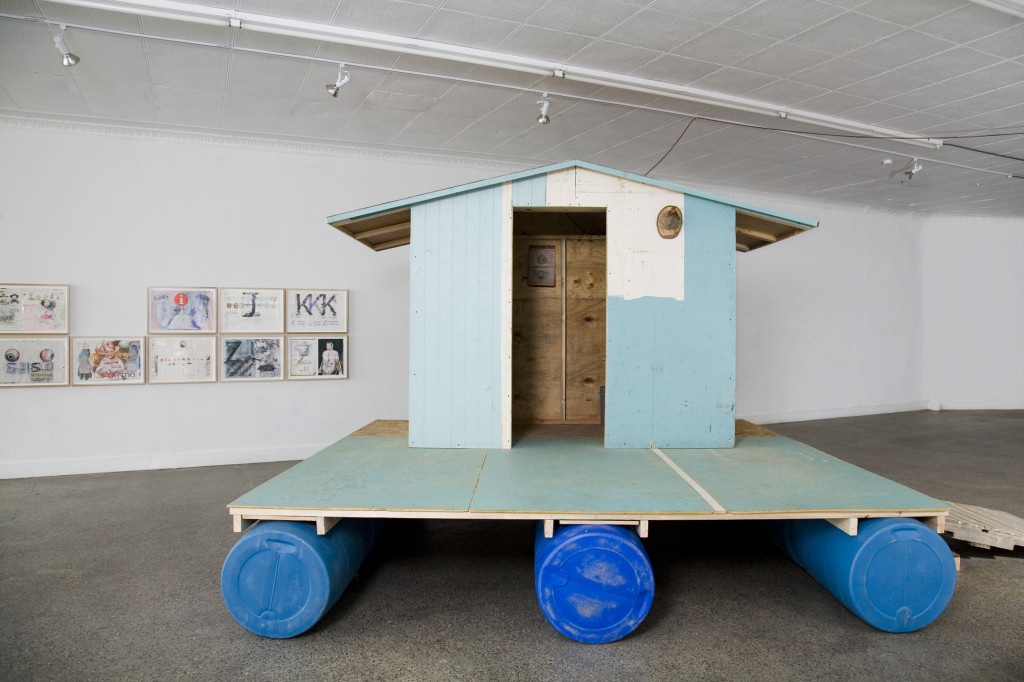
Radek Szlaga, Limited Dictionary exhibition view, Detroit 2013

Radek Szlaga, Limited Dictionary, exhibition view, Trinosophes, Detroit 2013, courtesy the artist and Trinosophes, photo Garrett Maclean

Radek Szlaga, Similarities / Podobieństwa, 2013, oil on canvas, 50 x 63 cm, photo courtesy the artist and LETO Gallery

Radek Szlaga, J (Limited Dictionary) , 2014, mixed media on paper, 42,5 x 62,5 cm, photo courtesy the artist and LETO Gallery

Radek Szlaga, Fumes / Opary, oil on canvas, 90 x 80 cm, photo courtesy the artist
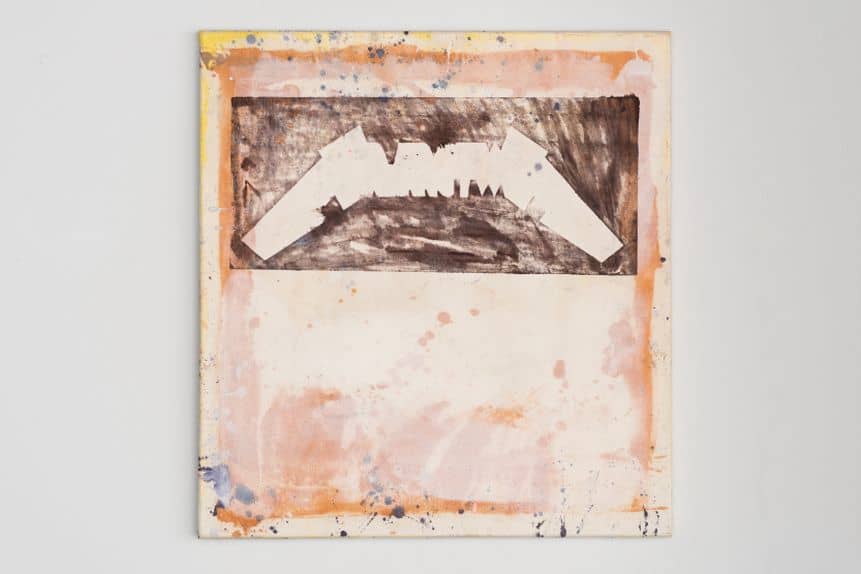
Radek Szlaga, Painting / Malarstwo, 2013, oil on canvas, 60 x 60 cm, photo courtesy the artist








